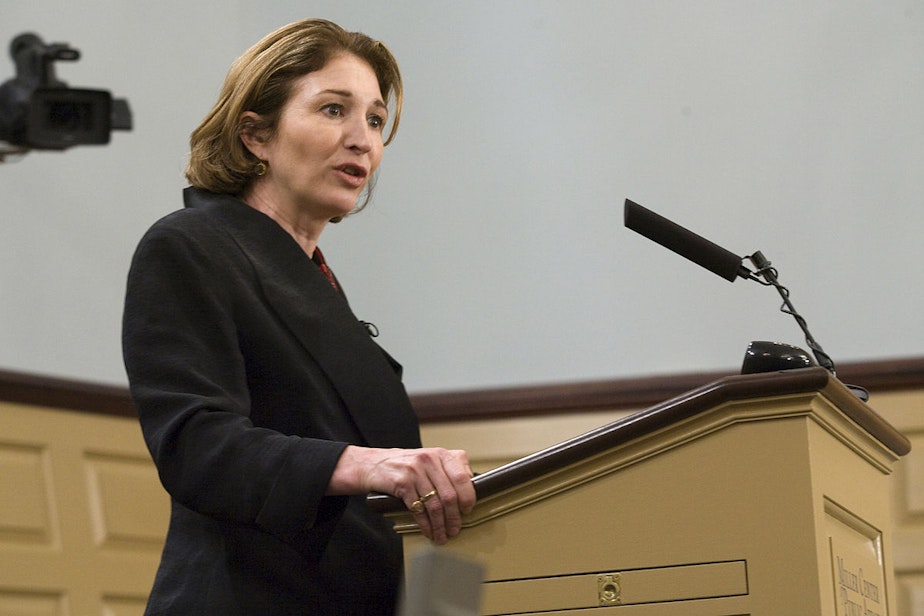Anne-Marie Slaughter: What The Richest And Poorest Women Have In Common

In 2012, Anne-Marie Slaughter worked long hours for the U.S. Department of State. After leaving Washington, she wrote an essay for The Atlantic titled, "Why Women Still Can’t Have It All."
That essay morphed into a book, “Unfinished Business: Women Men Work Family.” At Town Hall Seattle, Slaughter questioned why there are so few women at the top – and so many women at the bottom.
There's an unlovely symmetry. There are too few women at the top. But there are vastly too many women at the bottom.
The majority of minimum wage workers are women. Two-thirds of shift workers are women. The poorest members of our society are single mothers who are simultaneously supporting their families and providing as much care as they can.
That was the first shift in my thinking: We have to look at the condition of all women, which the women's movement has long tried to do, but the experience of white upper middle class women still dominates how we think about it.
At the top and at the bottom, you’re essentially suffering from discrimination against caregiving. If you're at the top and you take time out to be a mother, to be a daughter, to care for those you love – that is essentially a black hole on your resume. You are off leadership track even if you stay in, if you're working part time, if you're working flexibly – you're no longer on leadership track.
For women at the bottom, the consequences are far, far worse. But it's the same kind of discrimination or bias. It means that a woman who has a job is providing for her family. If her child gets sick, and she has to stay home with that child, she doesn't have paid leave, she can lose her job.
If there's a snow day – probably not so frequently in this part of the world – but in my part of the world, it snows and the schools close. And the workplaces don't. What are you supposed to do?
I started looking at these various half-truths that are holding us back. It's a half-truth that if you're committed enough to your career, you can make it. That's sometimes true, but it's only part of the story. If you marry the right person, if you sequence your career – there’s truth to all of those, but they’re not fully true.
One of these half-truths in the workplace is that flexibility is the solution. In my own life as a professor, flexibility was essential. I didn't realize how essential until I went to Washington and worked in a large bureaucracy and worked on other people's schedules.
But what we've got now is flexibility stigma. There is flexibility if you're fortunate enough to be in a workplace that has various flexibility possibilities. But if you take advantage of those policies, you are stigmatized. You are no longer on leadership track. You are no longer considered a player.
That is true for women, and it's even more true for men. Because if a man does that, if he takes paternity leave, if he works part time, not only is he not committed to his career in the way women are looked at, but his very masculinity is brought into question. Is he really one of the guys?
Lots of men wrote to me, arguing, you're seeing this only through female lenses. So this is also true for men; we just don't see it as often because fewer men take that role.
Slaughter has an extensive resume as a political scientist, a lawyer and as the first female director of policy planning at the U.S. Department of State. Anna Tatistcheff recorded her talk on Oct. 5, 2015. Listen to the full, unedited event below.

